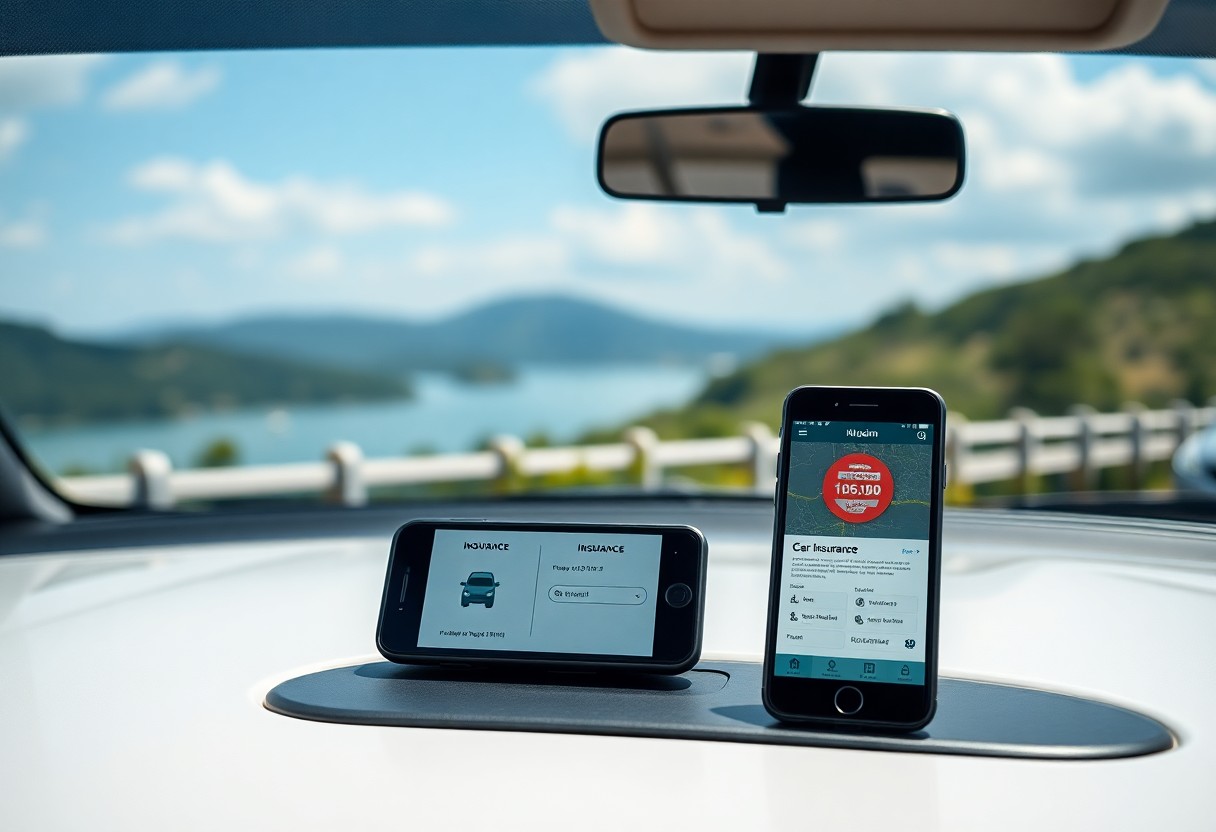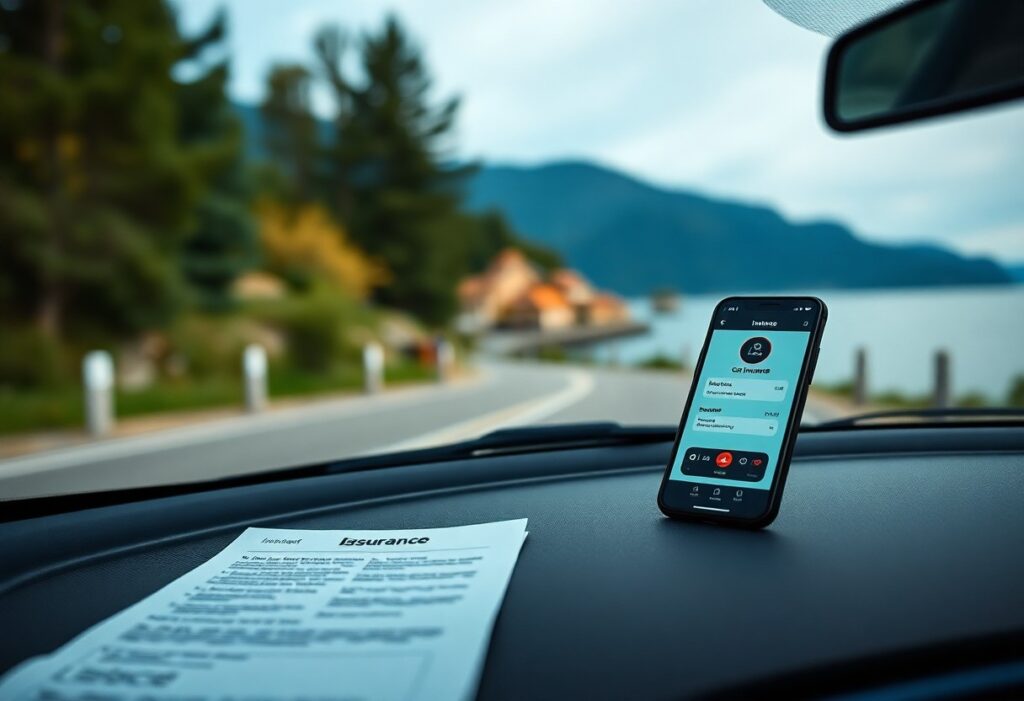You might think rental car insurance is just another expense, but it’s actually your vital safeguard against potentially devastating financial losses. When renting a vehicle, navigating through various insurance options can feel overwhelming, but making the right choice is critical for protecting yourself from thousands of dollars in potential damages. Whether you’re traveling for business or pleasure, understanding your rental car insurance options helps you make informed decisions that can save you significant money and stress in the long run. This guide will walk you through everything you need to know about rental car coverage, from basic liability protection to comprehensive insurance packages.
Fundamentals of Rental Car Insurance
For your protection when renting a vehicle, car insurance is a vital safety net against unexpected expenses. You’ll need to understand the basic types of coverage, including collision damage waiver, liability protection, and personal accident insurance. Statistics show that 1 in 6 rental car users face some incident, so proper insurance coverage becomes necessary for your peace of mind.
Legal Requirements
Along with your driver’s license, you must carry minimum liability insurance coverage when renting a car in any U.S. state. Your personal auto insurance might extend to rental cars, but coverage gaps could leave you exposed to significant financial risk. You’ll need to verify your existing coverage and understand local regulations before declining additional rental insurance.
Financial Protection Basics
Financial protection through rental car insurance shields you from potentially devastating costs. You’ll typically face coverage decisions including damage to the rental vehicle (CDW), liability for other parties’ damages, and personal injury protection. With average repair costs for rental vehicles exceeding $3,000, proper coverage becomes your financial safeguard.
But beyond the basic coverage, you’ll need to consider factors like your destination, trip duration, and personal risk tolerance. Your credit card might offer rental car protection, yet these benefits often come with limitations. You’ll want to evaluate deductibles, coverage limits, and exclusions to ensure comprehensive protection for your specific situation.
Primary Insurance Coverage Types
While renting a car, you’ll encounter several vital insurance coverage options designed to protect you and your rental vehicle. These range from basic liability protection to comprehensive coverage plans. Knowing these options helps you make informed decisions about your rental car protection.
| Coverage Type | Protection Offered |
|---|---|
| Collision Damage Waiver | Vehicle damage and theft protection |
| Liability Insurance | Third-party injury and property damage |
| Personal Accident Insurance | Medical expenses coverage |
| Personal Effects Coverage | Protection for personal belongings |
| Supplemental Coverage | Additional protection beyond standard coverage |
Collision and Loss Coverage
Insurance for your rental vehicle includes comprehensive protection against damage from accidents, theft, or vandalism. This coverage typically comes with a deductible ranging from $250 to $1,000, depending on your selected plan. Your rental vehicle receives protection against most types of physical damage, giving you peace of mind during your journey.
Liability Protection Options
One of the most fundamental aspects of rental car insurance is liability protection. This coverage safeguards you against claims from third parties for bodily injury or property damage, with typical coverage limits ranging from $50,000 to $1 million per incident.
Loss of personal liability protection could result in significant financial exposure. Your policy typically covers legal defense costs and settlement payments up to your coverage limit. You can choose between standard liability coverage or opt for supplemental protection for enhanced security.
Secondary Insurance Options
Now that you understand primary coverage, let’s explore additional protection layers for your rental car experience. These secondary options can fill crucial gaps in your coverage, offering up to $300,000 in extra protection beyond your primary insurance. You’ll find these supplementary choices particularly valuable when your existing coverage falls short.
Personal Protection Plans
To enhance your safety net, Personal Protection Plans provide comprehensive coverage for medical expenses and personal belongings. These plans typically cost between $5-15 per day and can cover up to $50,000 in medical costs for you and your passengers. Your valuables get protection against theft or damage while in the rental vehicle.
Property Protection Coverage
Along with personal protection, Property Protection Coverage safeguards your belongings inside the rental car. This coverage can reimburse up to $2,500 worth of personal items if they’re stolen or damaged during your rental period.
Plus, your Property Protection Coverage extends beyond basic theft protection. It covers incidents like vandalism, natural disasters, and even damage from accidents where you’re not at fault. You’ll receive coverage for electronics, luggage, and other personal items, with typically low deductibles around $50-100 per claim.

Specialized Coverage
Your rental car insurance needs might extend beyond basic coverage, depending on your specific travel plans and requirements. Whether you’re planning an off-road adventure or carrying valuable equipment, specialized coverage options can provide tailored protection for unique situations.
Supplemental Insurance Types
| Coverage Type | Protection Offered |
|---|---|
| Equipment Coverage | Protects specialized equipment and modifications |
| Off-Road Protection | Covers damage during authorized off-road use |
| International Coverage | Extends protection across country borders |
| Commercial Use | Covers business-related vehicle use |
| Extended Duration | Protection for long-term rentals |
Roadside Assistance Options
Beside standard insurance coverage, roadside assistance provides vital support during unexpected situations. This service includes 24/7 emergency support, towing services, and mechanical assistance. Knowing your roadside assistance options can save you from stressful situations and expensive recovery costs.
Options for roadside assistance typically include battery jump-starts, fuel delivery, lockout services, and tire changes. These services are particularly valuable when traveling in unfamiliar areas or during long-distance trips. You can choose between basic packages starting at $5 per day or comprehensive coverage that includes unlimited service calls.
Cost Considerations
To make an informed decision about rental car insurance, you need to weigh the daily costs against potential out-of-pocket expenses in case of an accident. Insurance rates typically range from $10 to $30 per day for basic coverage, while comprehensive protection can cost up to $50 daily. Perceiving these costs as an investment rather than an expense can help you make better decisions about your coverage needs.
Premium Factors
For rental car insurance, several key elements influence your premium rates:
- Vehicle type and value
- Rental duration
- Your driving history
- Location of rental
- Coverage level selected
Perceiving these factors helps you anticipate and potentially reduce your insurance costs.
Payment Structures
For rental car insurance, you’ll encounter various payment options. Most companies offer daily rates for short-term rentals, while extended rentals might qualify for weekly or monthly discounts. Your choice between upfront payment or per-day billing can affect the total cost.
Cost structures vary significantly among providers, with bundled packages often offering better value. You might save 15-20% by combining different coverage types. Some companies provide loyalty programs that can reduce your insurance costs by up to 25% for frequent renters.

Smart Insurance Decisions
All your rental car insurance choices need a strategic approach. Based on recent industry data, 65% of renters overpay for coverage they don’t need. Your smart decision-making process should balance cost-effectiveness with comprehensive protection. Consider your existing coverage through credit cards or personal auto insurance before making additional purchases.
Coverage Evaluation
After identifying your insurance needs, evaluate each coverage option against your specific situation. Your personal auto insurance might already provide primary coverage up to 0,000 for rental vehicles. Review your credit card benefits, as many premium cards offer collision damage waiver (CDW) at no extra cost. This evaluation can save you up to $30 per day on unnecessary coverage.
Policy Selection Strategy
With your coverage gaps identified, focus on selecting policies that fill these specific needs. Your strategy should prioritize imperative coverage areas while avoiding redundant protection. Consider factors like destination, rental duration, and vehicle value. Statistics show that supplemental liability insurance is most valuable in urban areas, where accident rates are 40% higher.
Decisions about rental car insurance require careful consideration of multiple factors. Your personal risk tolerance, travel location, and existing coverage play vital roles. Industry reports indicate that choosing the right combination of coverage can save you up to 60% on insurance costs while maintaining adequate protection. Focus on policies that address your specific vulnerabilities rather than accepting standard packages.
To wrap up
Presently, your choice of rental car insurance can make or break your travel experience. Your understanding of the various coverage options – from CDW to roadside assistance – puts you in the driver’s seat of protecting your finances and peace of mind. Before you pick up your next rental car, take time to evaluate your existing coverage, compare options, and select the protection that fits your needs. Your smart insurance choices today can save you from significant headaches tomorrow, making your rental experience smooth and worry-free.





You’ve really hit on an important topic here. When I first started renting cars, I typically saw insurance as just another line item in the budget, something I could gladly skip to save a few bucks. But I quickly learned that having the right coverage can make a world of difference. A couple of years ago, a friend of mine had a minor accident while on vacation, and the costs associated with the damages quickly ballooned—not to mention the stress of dealing with the rental company and insurance claims while trying to enjoy a much-needed getaway.
It’s interesting how our perspectives shift once we have a personal experience, isn’t it? Your story about your friend is a perfect example of why insurance can’t be just an afterthought. Renting a car often feels like a hassle on top of everything else during a trip, and skipping coverage seems like a quick way to save some cash. But then, when something goes wrong, those few bucks start looking a lot more significant.
You make a really valid point about the importance of rental car insurance. A few years ago, I rented a car for a road trip, and I opted out of the insurance because I thought my own auto policy covered me. Big mistake! I ended up in a minor fender bender that left me with unexpected repair costs that weren’t fully covered. It was a stressful experience that taught me not to underestimate the financial implications of skipping those rental insurance options.
Your experience really highlights how tricky rental car insurance can be. Many people think their personal auto policy has them covered, but the nuances can lead to unexpected situations. Those repair costs can sneak up on you, especially when you’re least expecting it during what should be a fun trip.
Your insights into rental car insurance really highlight an often-overlooked area of travel planning. It’s fascinating how many travelers bypass or underestimate the importance of this coverage, thinking it’s just an additional cost rather than a critical line of defense against unforeseen financial burdens. I remember when I rented my first car on a business trip—I opted out of the insurance thinking my personal auto policy would cover me. It was a stressful experience. When I returned the car, I discovered that a small scratch had appeared on the bumper during my time on the road. Thankfully, it was a minor cost, but it made me acutely aware of the potential risks involved.
Navigating the world of rental car insurance can indeed be quite daunting. I’ve experienced that sense of overwhelm firsthand, especially on a recent trip where I forgot to review my insurance options ahead of time. It’s interesting how a seemingly minor oversight can lead to significant stress, not to mention potential financial consequences, especially if something goes wrong during the rental.
It sounds like you’ve had a firsthand experience with the stress that can come from not having a solid plan. It’s easy to overlook the details when you’re caught up in the excitement of a trip. So many people aren’t fully aware of their coverage options until they’re standing at the rental desk, trying to make a quick decision with a ticking clock.
I can totally relate to that feeling of being overwhelmed by rental car insurance options. It’s easy to overlook those details when you’re focused on everything else that comes with travel. I remember a trip where I thought I was covered only to realize the policy I had didn’t extend to rental cars. That moment of realization was definitely stressful, especially because of the potential for extra financial hit.
I can totally relate to that feeling of overwhelm with rental car insurance; it’s a relief to find a guide that breaks down everything for renting a car, especially if you’re planning a theme park visit.
‘Rent a Car Online for Theme Park Visits: Complete Guide’
https://rentacar24.org/rent-a-car-online-for-theme-park-visits-complete-guide/.
Navigating the world of rental car insurance can indeed feel daunting, especially with so many options on the table. I remember when I first rented a car for a road trip; I was overwhelmed by the array of coverage plans. Ultimately, opting for the collision damage waiver gave me peace of mind, especially since we were driving through some remote areas where the risk of accidents seemed higher.
I can totally relate to feeling overwhelmed with all the rental car insurance options. It’s like stepping into a maze where every turn offers a new choice, and they all sound so similar yet so crucial. When I rented a car for a trip to the mountains last year, I felt the same pressure to make the right decision. I ended up going with a basic plan, but I constantly wondered if that was enough, especially when I saw some of those narrow, winding roads.
You know, diving into the world of rental car insurance feels a bit like trying to decipher the instructions for assembling IKEA furniture—just when you think you’ve got it figured out, there’s a new option that makes you question all your life choices. I ended up opting for the “super cover everything” plan once after a particularly terror-inducing experience where I almost became the world’s worst parking attendant. Spoiler alert: it involved a hedge and an eviscerated garden gnome.
You raise some important points about the necessity of rental car insurance, especially since many travelers often overlook this aspect amid the excitement of their trip. However, I’m curious about how frequently people actually use these insurances. For many, the possibility of damage or theft may feel remote—yet, incidents can happen unpredictably.
Navigating rental car insurance can indeed feel overwhelming, but it’s so important to prioritize understanding these options. I remember once renting a car without fully grasping the implications of forgoing additional coverage. I ended up with a small dent that turned into a massive repair bill—definitely a lesson learned.